Kia Picanto vs Mitsubishi Space Star – Which one offers the better deal?
Both models have their strengths – but which one suits you more?
Compare performance, efficiency, price and space directly: Kia Picanto or Mitsubishi Space Star?
Costs and Efficiency:
Price and efficiency are often the first things buyers look at. Here it becomes clear which model has the long-term edge – whether at the pump, the plug, or in purchase price.
Mitsubishi Space Star has a distinct advantage in terms of price – it starts at 11600 £, while the Kia Picanto costs 15300 £. That’s a price difference of around 3652 £.
Fuel consumption also shows a difference: Mitsubishi Space Star manages with 4.90 L and is therefore a bit more efficient than the Kia Picanto with 5.60 L. The difference is about 0.70 L per 100 km.
Engine and Performance:
Power, torque and acceleration say a lot about how a car feels on the road. This is where you see which model delivers more driving dynamics.
When it comes to engine power, the Mitsubishi Space Star has a hardly perceptible edge – offering 71 HP compared to 68 HP. That’s roughly 3 HP more horsepower.
In acceleration from 0 to 100 km/h, the Mitsubishi Space Star is minimal quicker – completing the sprint in 14.10 s, while the Kia Picanto takes 14.60 s. That’s about 0.50 s faster.
In terms of top speed, the Mitsubishi Space Star performs slight better – reaching 167 km/h, while the Kia Picanto tops out at 162 km/h. The difference is around 5 km/h.
There’s also a difference in torque: Mitsubishi Space Star pulls barely noticeable stronger with 102 Nm compared to 96 Nm. That’s about 6 Nm difference.
Space and Everyday Use:
Beyond pure performance, interior space and usability matter most in daily life. This is where you see which car is more practical and versatile.
Both vehicles offer seating for 5 people.
In curb weight, Mitsubishi Space Star is slightly lighter – 940 kg compared to 1124 kg. The difference is around 184 kg.
In terms of boot space, the Kia Picanto offers slight more room – 255 L compared to 235 L. That’s a difference of about 20 L.
In maximum load capacity, the Kia Picanto performs slight better – up to 1010 L, which is about 98 L more than the Mitsubishi Space Star.
When it comes to payload, Mitsubishi Space Star a bit takes the win – 400 kg compared to 332 kg. That’s a difference of about 68 kg.
Who comes out on top?
Overall, the Mitsubishi Space Star shows itself to be outperforms in nearly all aspects and secures the title of DriveDuel Champion.
It convinces with the more balanced overall package and proves to be the more versatile choice for everyday use.
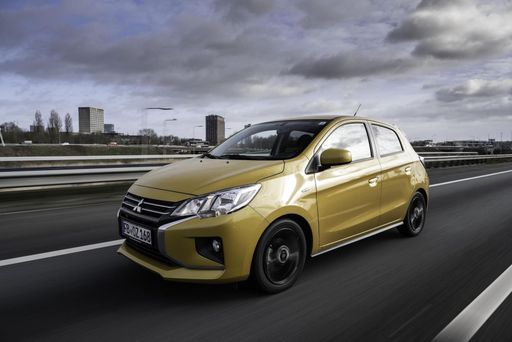 @ Mitsubishi Motors Corporation
@ Mitsubishi Motors Corporation
Mitsubishi Space Star
Kia Picanto
Kia Picanto is a cheeky city hatch that squeezes surprising style, practicality and a smile-inducing drive into a pocket-friendly package. It’s ideal for urban buyers who want fuss-free running, effortless parking and a car that punches above its class without pretending to be anything it’s not.
details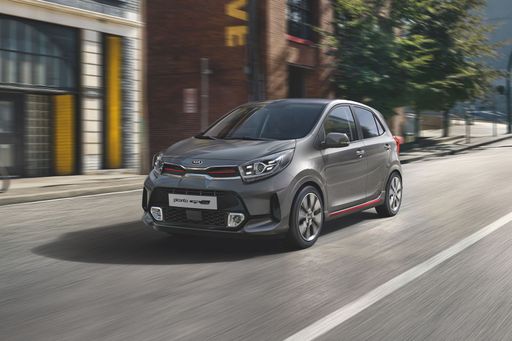 @ Kia Corporation
@ Kia Corporation
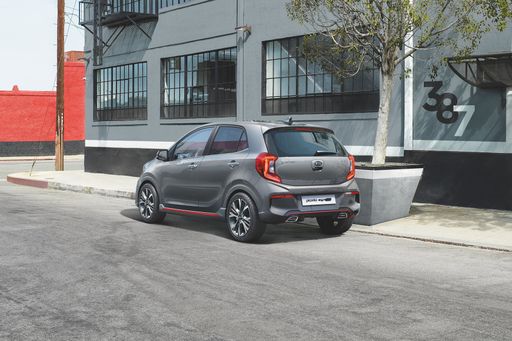 @ Kia Corporation
@ Kia Corporation
 @ Kia Corporation
@ Kia Corporation
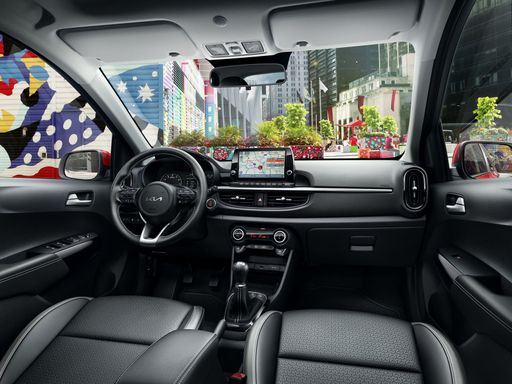 @ Kia Corporation
@ Kia Corporation
Mitsubishi Space Star
The Mitsubishi Space Star offers a compact yet surprisingly spacious experience, making it an ideal choice for urban dwellers who need agility and comfort. Its sleek design is complemented by a range of vibrant colour options, adding a touch of flair to everyday commutes. With a focus on efficiency and practicality, the Space Star combines a user-friendly interface with modern technology to ensure a smooth driving experience.
details @ Mitsubishi Motors Corporation
@ Mitsubishi Motors Corporation
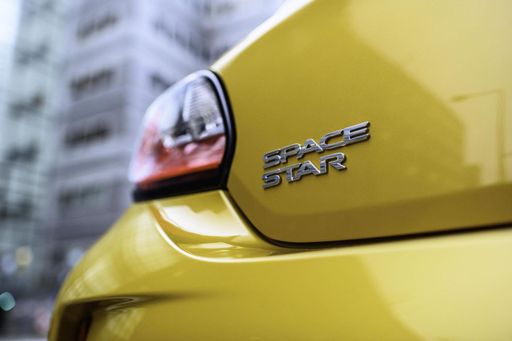 @ Mitsubishi Motors Corporation
@ Mitsubishi Motors Corporation
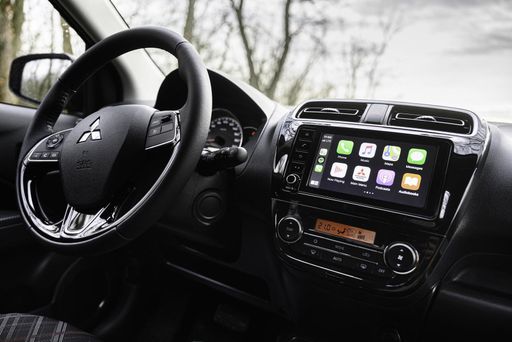 @ Mitsubishi Motors Corporation
@ Mitsubishi Motors Corporation
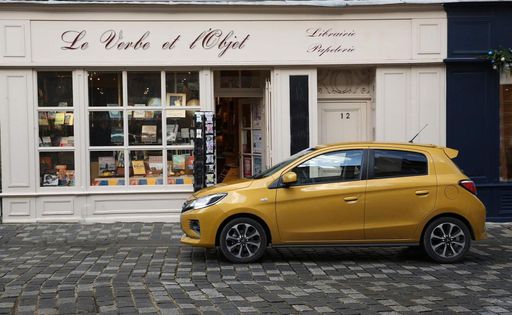 @ Mitsubishi Motors Corporation
@ Mitsubishi Motors Corporation
 @ Kia Corporation
@ Kia Corporation
|
 @ Mitsubishi Motors Corporation
@ Mitsubishi Motors Corporation
|
|
|
|
Costs and Consumption |
|
|---|---|
|
Price
15300 - 19300 £
|
Price
11600 - 18700 £
|
|
Consumption L/100km
5.6 - 5.9 L
|
Consumption L/100km
4.9 - 5.5 L
|
|
Consumption kWh/100km
-
|
Consumption kWh/100km
-
|
|
Electric Range
-
|
Electric Range
-
|
|
Battery Capacity
-
|
Battery Capacity
-
|
|
co2
127 - 135 g/km
|
co2
112 - 125 g/km
|
|
Fuel tank capacity
35 L
|
Fuel tank capacity
35 L
|
Dimensions and Body |
|
|---|---|
|
Body Type
Hatchback
|
Body Type
Hatchback
|
|
Seats
4 - 5
|
Seats
5
|
|
Doors
5
|
Doors
5
|
|
Curb weight
1124 - 1131 kg
|
Curb weight
940 - 1011 kg
|
|
Trunk capacity
255 L
|
Trunk capacity
209 - 235 L
|
|
Length
3605 mm
|
Length
3845 mm
|
|
Width
1595 mm
|
Width
1665 mm
|
|
Height
1485 mm
|
Height
1505 mm
|
|
Max trunk capacity
1010 L
|
Max trunk capacity
881 - 912 L
|
|
Payload
253 - 332 kg
|
Payload
359 - 400 kg
|
Engine and Performance |
|
|---|---|
|
Engine Type
Petrol
|
Engine Type
Petrol
|
|
Transmission
Manuel, Automatic
|
Transmission
Manuel, Automatic
|
|
Transmission Detail
Manual Gearbox, Automated Manual
|
Transmission Detail
Manual Gearbox, CVT
|
|
Drive Type
Front-Wheel Drive
|
Drive Type
Front-Wheel Drive
|
|
Power HP
68 HP
|
Power HP
71 HP
|
|
Acceleration 0-100km/h
14.6 - 17.2 s
|
Acceleration 0-100km/h
14.1 - 15.8 s
|
|
Max Speed
160 - 162 km/h
|
Max Speed
163 - 167 km/h
|
|
Torque
96 Nm
|
Torque
102 Nm
|
|
Number of Cylinders
3
|
Number of Cylinders
3
|
|
Power kW
50 kW
|
Power kW
52 kW
|
|
Engine capacity
998 cm3
|
Engine capacity
1193 cm3
|
General |
|
|---|---|
|
Model Year
2025
|
Model Year
2020 - 2022
|
|
CO2 Efficiency Class
D
|
CO2 Efficiency Class
C, D
|
|
Brand
Kia
|
Brand
Mitsubishi
|
What drive types are available for the Kia Picanto?
Available configurations include Front-Wheel Drive.
The prices and data displayed are estimates based on German list prices and may vary by country. This information is not legally binding.
